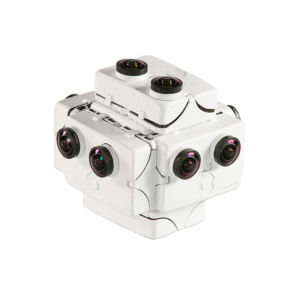SpaceVR a San Francisco-based startup developed the world’s first virtual reality platform that will allow users to experience space first hand from any mobile, desktop or virtual reality device. The company is currently aiming to send a virtual reality camera to the International Space Station to capture immersive VR video of the Earth from space.
Being in space and looking down at the earth, astronauts are hit with an astounding reality: our planet is a tiny, fragile ball of life, “hanging in the void”, shielded and nourished by a paper-thin atmosphere. It’s a phenomenon known as the Overview Effect.
 Overview One is the virtual reality camera that we will be sending to the Cupola module, the observation deck of the International Space Station (ISS), to capture immersive virtual reality video – giving you the chance to have the same experience the astronauts get.
Overview One is the virtual reality camera that we will be sending to the Cupola module, the observation deck of the International Space Station (ISS), to capture immersive virtual reality video – giving you the chance to have the same experience the astronauts get.
VR camera is being developed using space heritage parts (camera CCD sensor and batteries) to get it up and running as quickly, cheaply and efficiently as possible. Was reduced project risk by focusing attention on solving the human and computer interface problems, since astronaut time is limited.
How Virtual Reality Works
Virtual reality, more commonly known as VR, is an immersive, 3D experience that makes you feel like you’re actually somewhere that you’re not. You’re transported to a virtual world that you feel truly a part of.
Think of it as the difference between watching a SpaceX launch on TV and feeling like you’re actually at Cape Canaveral watching and hearing the rocket takeoff.
These experiences are delivered through a headset, such as the Samsung GearVR or the more cost effective Google Cardboard, which allow you to look around and see the environment in all directions.
The headset itself is a wearable device you put over your eyes that combines all of these components to teleport you to another world.
How Will Capturing the Right Content
There are 6 key steps to getting this from concept to reality:
- Getting space-ready: The first step in the process is to prototype and go through the three Product Lifecycle stages (EVT, DVT, PVT).
- Testing the camera on Earth based systems: It is critical to stress test the design of any space hardware before it launches. This will be done by launching camera to the edge of space (60,000 ft), recording the journey and stitching it together into a breathtaking VR experience for users. This will allow to identify any issues with the hardware design and improve stitching process for creating seamless content.
- Sending up parts: After testing will be manufactured one flight-ready Overview One unit and launch it to the International Space Station (ISS) through NanoRacks. NanoRacks specializes in transporting hardware to the ISS and is securing a spot for the Overview One on the flight manifest of a launch vehicle (like SpaceX’s Dragon or Orbital Science’s Cygnus).
- Lights, Camera, Action: Astronauts will turn on the camera and begin to capture footage from the space station. The first place we will film in is the Cupola module, the observation deck of the ISS. You can see the Earth passing under you from this module.
- Storage, Charging, Downlink: The camera will be stored in a NanoRacks NanoLab. This is where it will charge between uses and downlink data.
- Getting the Killer Content to You: We will down-mass the recorded footage (i.e. bring it back to Earth) and render it.